Los Angeles Times: Pentagon rate in 10 billions lost
Nevertheless, some of the successes are unlikely to justify all costs, which is the reason for regular critical articles in the press. Not so long ago, on April 5, the Los Angeles Times published the article The Pentagon's $ 10-billion bet gone bad (“The Pentagon’s bet on 10 billions was lost”). Post author David Willman analyzed the successes and failures of the United States in the field of missile defense and came to the sad conclusions, the main thesis of which was put in the title. The journalist found that the activities of the Agency on missile defense leads to unnecessary spending of the military budget. First of all, the SBX floating radar has been criticized.
SBX complex issues
At the beginning of his article, D. Willman recalls how promising the new project was. The leaders of the Agency for missile defense argued that the promising radar will be the most powerful in the world. It was said that she would be able to detect a baseball ball over San Francisco from the other side of the country. It was assumed that the radar Sea Based X-band Radar or SBX ("Radar sea-based X-band") will monitor potentially dangerous regions. She could have noticed the launch of the North Korean missiles, calculate their trajectories, separate the missiles from false targets, and target other missile defense elements.
In the 2007 year, speaking at the Senate subcommittee, the head of the ABM Agency claimed that the SBX station had no equal. Nevertheless, the Los Angeles Times staff managed to establish that the SBX project was not a revolution in its field, but a real failure. The failure cost 2,2 billion dollars.
D. Willman notes that the SBX system is really capable of performing the tasks assigned to it. However, its real capabilities are limited by the fact that its field of view is not enough to work under the conditions of the most real attack. Experts believe that in the event of a conflict with the use of nuclear arsenals, missile defense systems will have to deal with a large number of missiles, warheads and false targets. The SBX radar does not fully meet the requirements of such a scenario of war.
SBX floating radar was planned to be commissioned in the middle of the last decade. The station was really built, but it is still not in full operation. Most of the time, the radar station is idle at the base at Pearl Harbor. From this D. Willman makes a simple but sad conclusion. The SBX project, having “eaten” quite a lot of money, “bit through” a solid hole in the defense of the United States. The money spent on SBX could be used to create other projects. In particular, the missile defense system could be replenished with ground-based radar warning of a missile attack with higher performance than the SBX.
Other expenses
The author of the publication recalls that excessive spending and useless projects have already become a real visiting card of the Missile Defense Agency, which is responsible for creating systems to protect against a missile attack. Over the past ten years, this organization, as calculated by journalists, has spent about 10 billions of dollars on four projects of promising systems, including SBX, which did not produce the expected results.
The dubious programs mentioned were designed to solve one of the most serious problems encountered when creating a missile defense. Modern ballistic missiles in addition to warheads carry a set of means to overcome missile defense in the form of a large number of false targets. It is assumed that the false targets will be able to “deceive” the radar stations, forcing them to issue incorrect target designation. As a result, interceptor missiles will attempt to destroy false targets, while real warheads will continue flying. In recent years, the ABM Agency has been actively engaged in creating systems that will avoid such a situation during a possible nuclear missile strike.
In addition to the sea-based radar already mentioned, D. Willman mentions other projects of promising anti-missile systems designed to find or destroy enemy ballistic missiles. All four complexes, described in the article The Pentagon's $ 10-billion bet gone bad, cannot yet perform the tasks assigned to them, which accordingly affects the combat capability of the entire missile defense system.
The ABL (Airborne Laser) or Boeing YAL-1 system was considered a promising and promising means of destroying enemy ballistic missiles in the early stages of flight. Boeing, Northrop Grumman and Lockheed Martin have installed a number of new equipment, including three lasers, on a specially converted Boeing 747 aircraft. With the help of the main laser system it was supposed to destroy the missiles, literally burning them in flight. At one time, the ABL project was presented as a real revolution in the field of armaments and military equipment.
Later tests showed that the Boeing YAL-1 aircraft in its existing or modified form cannot perform all the tasks assigned to it. So, for the timely destruction of missiles, the aircraft would have to fly near the borders of a potential enemy, being an easy target for enemy air defense. In addition, for the reliable destruction of targets, a laser with a power of 20-30 times larger than the existing one was required. Finally, laser-used reagents were too expensive and unsafe for personnel.
By the end of the last decade, the leadership of the Pentagon began to doubt the need to continue the ABL project, not to mention the advisability of deploying such a system as part of the missile defense system. In 2012, against the background of regular cuts in the military budget, the project was closed. It cost the war department 5,3 a billion dollars.
Another promising development is the Kinetic Energy Interceptor (KEI) rocket, designed for kinetic interception of targets. Initially it was assumed that such missiles, developed by Northrrop Grumman and Raytheon, will be launched from land or ship launchers. After this, KEI missiles should be aimed at the specified targets and destroy them with a direct collision. When hit by an enemy rocket on the active leg of the flight, such an interceptor could guaranteedly destroy all combat units.
As the project was developed, experts identified an increasing number of tasks that would have to be solved to ensure the required characteristics. So, the missile turned out to be too large, because of which it could not be launched from existing ships. Necessary modernization fleet could cost several billion dollars. In addition, KEI products had a relatively short flight range, which did not allow to hit missiles of potential adversaries in the active area when starting from a ground launcher.
As a result, the experts came to the conclusion that there are no prospects and the inexpediency of continuing the work. In 2009, the KEI project was closed. The development of a kinetic interceptor took about 1,7 billion.
In the middle of the past decade, Raytheon and Lockheed Martin received an order to develop the Multiple Kill Vehicle project. They were required to create a platform that carries a large number of small antimissiles. It was expected that it would be possible to fit in the required dimensions up to 20 interceptors. The platform was supposed to deliver interceptors to the target area, after which the enemy missile was destroyed. The launch of a large number of miniature antimissiles made it possible to attack the missile warheads with false targets.
The Multiple Kill Vehicle project faced great difficulties already at the stage of preliminary research and development of the appearance. Creating a compact missile, capable of aiming at the target and destroy it, proved to be an extremely difficult task. In addition, there were serious problems with the delivery of such interceptors to the target area.
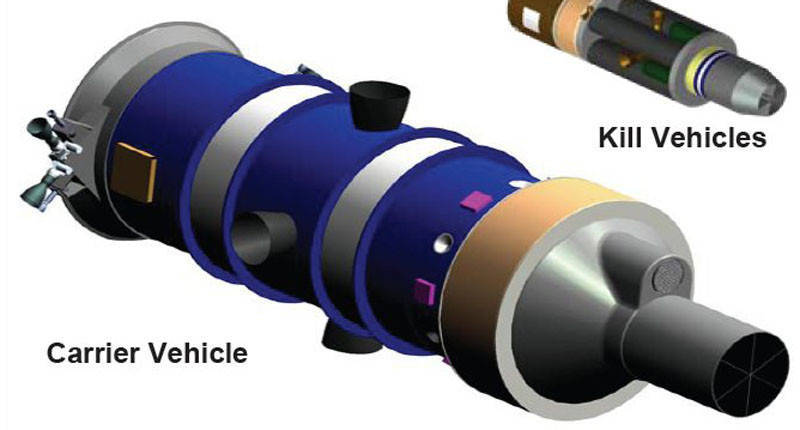
Numerous difficulties of a technical nature led to the fact that the promising project did not seem to have been developed. The original proposal was so difficult to implement that in 2009, it was abandoned. During the preliminary work on the project 700 million dollars was spent.
Search guilty
D. Willman believes that such excessive spending, as well as an increased interest in missile defense in general, is due to the anxiety sentiment that has spread in Washington after 11 September 2001. Then the American "hawks" warned the country's leadership about a possible threat from Iran and North Korea, which, in their opinion, would soon have missiles capable of reaching the United States.
The response to these warnings was George W. Bush’s order from 2002. The President of the United States ordered that work be accelerated and the country’s anti-missile defense system be built over the next two years. Specialists of the Agency on missile defense, being limited in time, began to take into consideration all more or less promising proposals, not paying due attention to checking their viability and economic feasibility. In addition, its role in this stories Congressmen also played. Some officials actively defended even those projects that have already shown their worthlessness.
The former head of the missile direction of the company Lockheed L. David Montague describes the situation as follows. The leaders responsible for the creation of new anti-missile systems did not fully understand a number of critical issues. As a result, programs appeared that "defy the laws of physics and economic logic." In addition, Montague believes that the SBX floating radar should not have been built at all.
The author of the publication, “The Pentagon Rate at 10 Billions Lost” also quotes the former head of the US strategic command, General Eugene E. Hebiger. The retired general believes that the missile defense missile defense agencies demonstrate the inability of this organization to analyze alternatives and their reluctance to contact specialists to conduct an independent assessment of the cost of new projects.
Officials responsible for creating useless projects provide some arguments in their own defense. He claims that their main task was to create a new anti-missile defense system architecture. Construction of the SBX radar station is justified by the fact that the deployment of a network of ground-based radars would be much more expensive and would take longer.
Of great interest are the words of Henry A. Obering, who previously held the post of head of the ABM Agency. He believes that all the failures in the field of missile defense are a direct consequence of the decisions of the administration of President Barack Obama and Congress. The country's leadership refused to increase funding for promising projects, which is why they could not be completed. At the same time, the former director of the ABM Agency notes that the successful interception of just one missile aimed at a city in the United States will make it possible to fully and repeatedly recoup all costs by preventing enormous damage.
The current director of the ABM Agency, James D. Syring, in turn, refused to answer questions from journalists Los Angeles Times. At the same time, the organization, in its response to the request, spoke in defense of ambiguous projects. It is argued that the constructed missile defense system can perform the duties assigned to it. As for the SBX radar, it was called a successful investment of money.
D. Willman also managed to get a comment from Boeing, an active participant in the creation of floating radar. Representatives of the "Boeing" claim that the new station has all the capabilities to perform the tasks with the required speed and accuracy. Raytheon, also involved in the SBX project, declined to comment.
On the structure of US missile defense
Further, the author of the publication recalled the role and features of the work of the Agency on missile defense. This organization was founded under Ronald Reagan. Currently, it employs 8800 people, the organization’s annual budget is about 8 billion dollars. The Agency manages several systems that are already on duty. These are shipborne missile defense systems based on the Aegis system, land systems THAAD, as well as GMD (Ground-Based Midcourse Defense) systems with the GBI antimissile system. It should be noted that the four programs mentioned above were designed to complement the GMD system.
The state of anti-missile systems is such that the defense of the United States against a possible nuclear missile strike is primarily based on deterrence. It is understood that Russia and China will not attack the United States because of the danger of a retaliatory strike with corresponding disastrous consequences. The GBI anti-missiles, in turn, are designed to protect against other threats - from the DPRK and Iran’s missiles, due to the limited strike potential of these states.
GMD complexes deployed at Vandenberg (California) and Fort Greeley (Alaska) airbases. GBI missiles are designed to hit enemy missiles on the cruise flight. There are 4 rockets in California now, 26 in Alaska. Destruction of the target is due to the kinetic energy from a direct hit of the striking element.
The development of the GMD project began in the nineties. Work intensified after the orders of G. Bush, issued in 2002 year. Deployment of the first complexes was required to complete in two years. In order to complete all work on time, the Minister of Defense, Donald Rumsfeld, allowed the ABM Agency to bypass the standard procurement rules and technology checks. Such an approach really reduced the project implementation time, however, it negatively affected the quality of work and the final product.
Despite the presence of a large variety of problems, the GMD complex was officially adopted as early as 2004. Since then, nine GBI missile test launches have been conducted. Only four launches resulted in a successful interception of the training target. For this reason, notes D. Willman, the capabilities of the complex to intercept missiles in a difficult jamming environment are still cause for concern.
For effective use of antimissiles, a modern radar station is needed, which can detect and track targets, as well as distinguish real missiles or warheads from false targets. Without such surveillance tools, missile defense systems cannot distinguish a real threat from a false one with corresponding consequences. In addition, the radar assigned the task of monitoring the results of the use of antimissiles. Experts believe that without detecting a target’s defeat, GMD complexes can quickly use all available anti-missiles, the number of which leaves much to be desired.
Currently, the United States missile defense system has a network of missile attack warning radar stations. Similar properties exist in California, Alaska, the United Kingdom and Greenland. Ground-based radar stations are complemented by ship-based stations. The existing network of stations is able to efficiently perform its functions, however, some measures need to be taken to improve its performance. In particular, the detection range of objects is limited by the curvature of the Earth, which is why land or sea radars, as well as spacecraft, cannot always correctly determine the type of object detected and the risks associated with it.
SBX project
Back in the nineties, the ABM Agency intended to build nine new X-band ground radars (frequency 8-12 GHz, wavelength 2,5-3,75 cm). The main advantage of using this frequency range is a sufficiently high resolution, which, as expected, will increase the likelihood of correct target identification. By building nine new stations, it was planned to completely cover the Pacific and Atlantic oceans with the review sectors. In the 2002 year, in view of the reduction in the timing of the deployment of new systems, it was decided to abandon the construction of ground stations. Instead, they decided to build one sea-based radar.
The base for a promising floating radar was to be a special port on one of the Aleutian Islands. From there, the station could monitor the activities of the DPRK and other countries in the region. If necessary, it could be transferred to other areas of the world ocean. It is from these ideas that the SBX project, which is now the subject of criticism, emerged.
At the suggestion of the company Boeing, they decided to build a radar of a new type based on the units of the offshore drilling platform. In 2003, such a platform was purchased in Norway and sent to one of the American shipyards. There, the platform was equipped with a power plant, residential and working premises, a set of special equipment and a characteristic spherical antenna cover. The result was a construction about 400 feet long (122 m) and weighing about 50 thousand tons. Previous missile defense agency executives have argued that the SBX service will start before the end of 2005.
In developing the floating station, the SBX did not take into account one crucial point. It was planned to be operated near the Aleutian Islands, in an area with frequent strong winds and strong waves. Because of this, the platform had to be refined. Changing the design and installation of some new objects on the future base cost several tens of millions of dollars and lasted until the autumn of 2007.
The Missile Defense Agency strongly praised the new complex and spoke of its highest characteristics. In particular, it was mentioned that the SBX, while in the Chesapeake Bay, can detect a baseball over San Francisco. However, experts note that due to the curvature of the planet's surface, this ball must be at a height of about 870 miles. This is about 200 miles more than the maximum altitude of intercontinental ballistic missiles. D. Willman cites the words of space engineer S. U. Mead, who claimed that in the real world with intercontinental ballistic missiles, the analogy with a baseball ball does not make sense.
The author of the article The Pentagon's $ 10-billion bet gone bad also mentions the characteristic flaw of the SBX radar in the form of a relatively narrow field of view. This station can monitor a sector just 25 ° wide. Because of this, a sufficiently powerful equipment, in theory capable of performing the assigned tasks, in fact will not be able to detect targets in time. It was assumed that the missile attack warning system would work as follows. Ground radars detect a suspicious object and transmit information about it to the SBX. This station, in turn, is aimed at the target and produces identification. Further, the target data is transmitted to the missile complexes. In a combat situation, when a large number of marks appear on the screens, such a multi-level system may not have time to handle all possible threats.
Thus, the SBX station, located near the Aleutian Islands, cannot cover the entire Pacific Ocean and track missile launches in its area of responsibility. All this does not allow us to consider this radar as a full-fledged element of the missile defense system.
Nevertheless, Ronald T. Kadish, at the beginning of the two thousandth who headed the Missile Defense Agency, argues that the main advantages of the SBX complex are low cost compared to ground stations, as well as the possibility of moving to the required area. In addition, he argues that the SBX has sufficient characteristics to perform the assigned tasks.
Apparently, the leadership of the Pentagon understood the seriousness of the problems associated with the new project. In addition, there was an understanding of the need to use an "intermediate" radar between early detection stations and elements of the GMD complex. To supplement and replace the SBX in 2006 and 2014, two X-band stations were commissioned in Japan and South Korea.
Also in the Los Angeles Times raised the issue of persistent problems with various equipment complex SBX. This system was used in tests of the GMD missile complex. During 2007 testing, some of the radar systems behaved in the wrong way, which led the specialists to develop updated software. Problems were also fixed during the 2010 test of the year, when SBX was used as the only target detection tool. Due to some malfunctions, the station was unable to direct the GBI antimissile on the target, and it was not hit. In June, 2014, SBX found a target and fired a missile at it, but was unable to detect its destruction.
Expensive and useless
A few years ago, the command of the US armed forces became disillusioned with the SBX project. During the years of testing, the radar platform burned tons of fuel for engines and power systems, and various factors influenced the state of the structure and instruments. Back in 2009, it was decided not to send the SBX platform to the shores of the Korean Peninsula to monitor the testing of North Korean missiles. The Pentagon leadership found such a mission too expensive and unnecessary.
In 2011, the SBX radar was handed over to the naval forces. Specialists of the naval forces argued that in order to work effectively in the fleet, it was necessary to modify the complex to meet the existing requirements for marine engineering. However, such work will lead to additional costs of tens of millions of dollars.
At the end of his article D. Willman talks about the current state of the project SBX. The platform with the SBX radar station was built in the middle of the last decade, but so far it has not reached the intended base in the Aleutian Islands. In 2012, the status of the complex was changed to limited test support (“limited test support”). In the 2013 platform, it was transferred to Pearl Harbor, where it remains to this day. The SBX program cost taxpayers 2,2 billion dollars. To perform the tasks previously assigned to the SBX, it is planned to build a new ground-based radar in Alaska. The completion date is 2020 year. Estimated cost is about 1 billion.
***
As we see, the United States continues to reap the benefits of haste in the construction of a missile defense system. The acceleration of work at the beginning of the last decade made it possible to quickly put on duty several new complexes. However, the adoption was only formal, since the specialists had to continue testing and fine-tuning all new systems. Due to its complexity, all new complexes still do not fully meet the requirements. As a result - the Pentagon is forced to spend money on projects with dubious prospects.
The American journalist from the Los Angeles Times estimated that only four unsuccessful projects, already closed or suspended, resulted in 10 wasting up billions of dollars. In the future, the United States will have to develop the remaining systems and build new ones, which will result in additional costs. It can be assumed that because of all these problems, over the next few years, the United States will have a relatively weak missile defense, which will be able to repel only a few attacks from countries with developing rocket technology. A full-scale nuclear missile strike by Russia and China will not withstand such a system, which is why a large number of warheads will be able to reach their targets. Thus, one can agree with David Hillman: 10 billion dollars were really wasted.
The Pentagon's $ 10-billion article bet gone bad:
http://graphics.latimes.com/missile-defense/
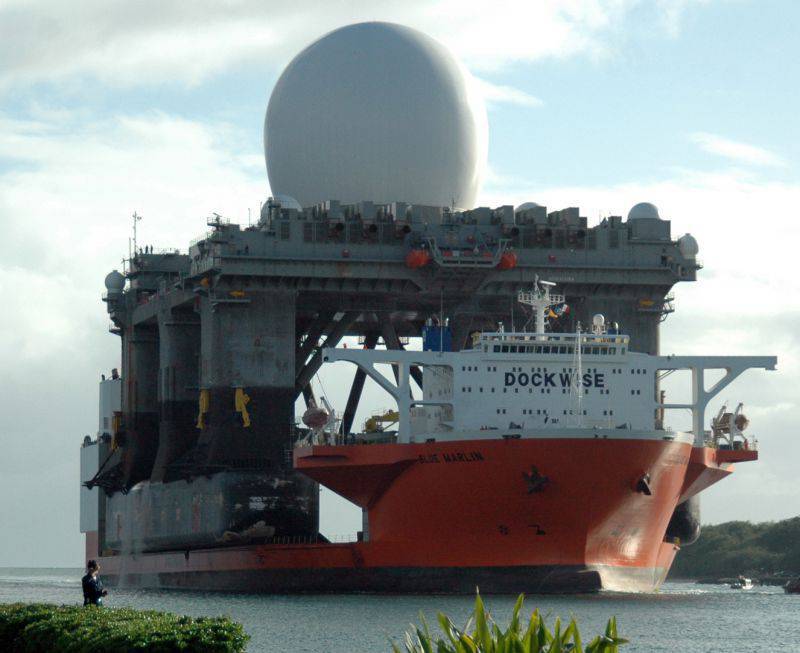
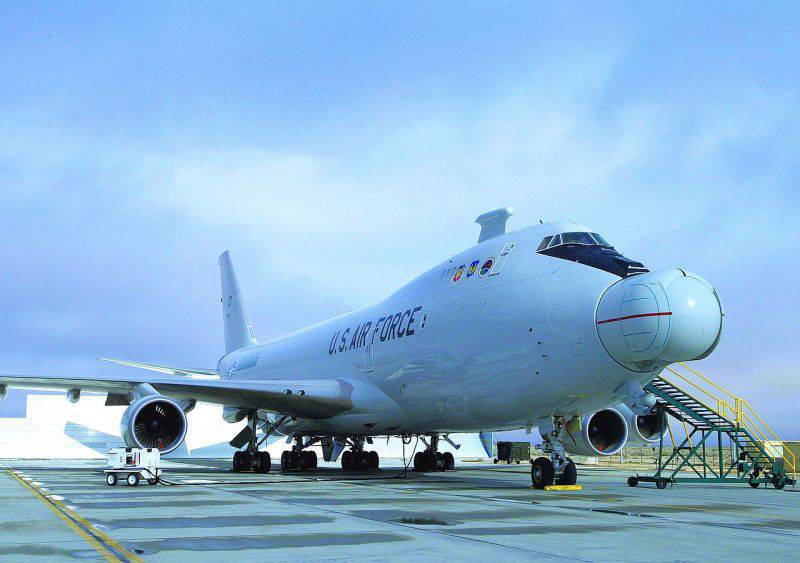
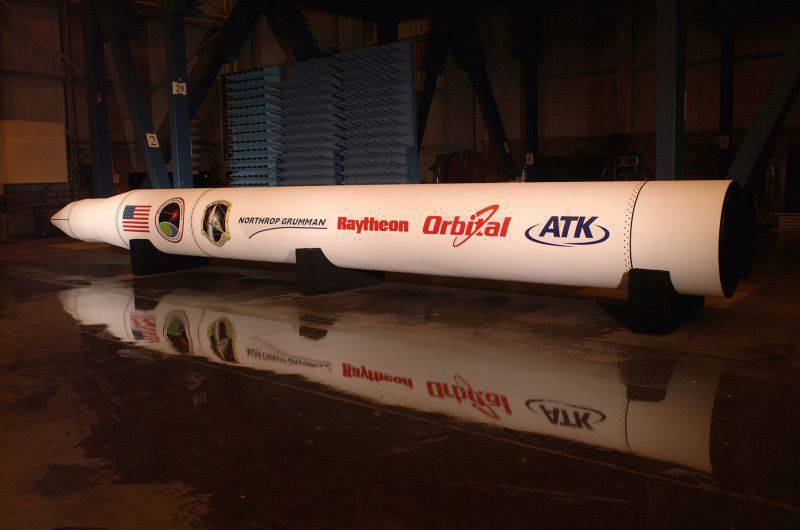

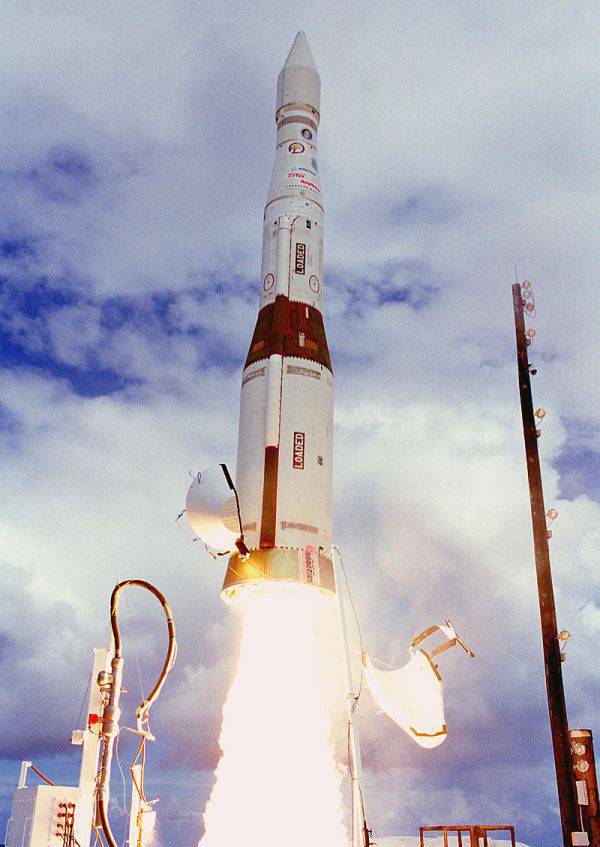
Information